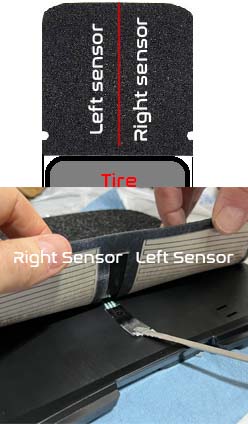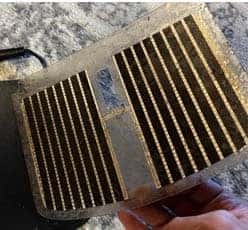
Ghosting Onewheels are a real thing. They have been most reported to occur on Onewheel GT’s (primarily due to the concave front sensor) however ghosting can occur on Onewheel Pint, Pint X, XR and GT.
Onewheel Ghosting is a sensor malfunction in which a Onewheel engages without a rider onboard. This is due to a sensor malfunction or an object engaging the front sensors. This is a potentially dangerous scenario as it can damage pedestrians or objects in its path.
Onewheel Ghosting – Its Origins and Prevalence
The name essentially comes from the idea that there is an invisible rider riding the Onewheel as its engaged without a rider (hence ghost). Fortunately, ghosting concerns are really limited to certain Onewheel GT boards. This occured during the release of the Onewheel GT board.
Ghosting has been known to exist on modified XR and Pint boards. Typically this is attributed to the rider modifying the griptape or overlaying a footpad onto the standard sensor. Any modifications made to the sensor (front footpad) will add some degree to a possibility of a ghosting issue.
Malfunctioning Front Sensor – GT Recall
Upon the initial release of the Onewheel GT, there were reports of Onewheels ‘taking off on their own’ (ghosting). These would dart into objects and pedestrians. Ghosting is directly related to the front footpad sensor. The front footpad on a stock Onewheel is comprised of a left and right sensor pad. When both are engaged and the board’s nose and tail are up, the motor engages.

The Onewheel GT is the first Onewheel with a front concave sensor pad. This is likely the main culprit. The V1, Plus, XR and Pint did not have as common of an issue. Some attribute the ghosting to the sensor being more sensitive. Even a small amount of pressure engages the motor. Future Motion has conducted a recall on certain GT models where they reissue a footpad to alleviate the ghosting.
A message that you may receive as you’re riding is a foot pad sensor warning stating that one zone of the sensor is not engaged. While its not an immediate concern, you should check your shoes and contact of the sensor as you receive the message.
Sensitivity of the Onewheel sensor matters. Mounting a Onewheel without it engaging can be frustrating. Future Motion may have made the initial sensors too sensitive however with the recall, this concern is no more.
Onewheel Ghosting Due to Aftermarket Pads / Griptape
There are several warning on aftermarket grip tape and footpad products warning against removing the front footpad’s grip tape. This can possibly damage the sensor. The front sensor is within a plastic ‘onion’. There is a fragile gap that has been engineered in a way so that pressure will make contact. Contact on both sides will engage the motor.
It can be obvious why companies do not want you to disrupt that fragile plastic sensor. Most companies either recommend cleaning the factory front pad and going over it or at least using a heat gun to carefully pull off the original grip tape. In either instance it should be obvious that this is ‘DO AT YOUR OWN RISK’.
That being said many riders have custom front pads and never have an issue. I personally recommend just buying a complete front sensor to avoid damaging the sensor’s abilities.

Aftermarket Front Sensors
Currently the hottest front sensor for the Onewheel GT and XR is Platysense Footpads made by Land Surf (company that makes ‘Fangs‘). The Platysense can be sold with just the sensor or both footpads. This is a single zoned sensor (known as Posi-sensor). The benefits of Posi sensors is that the motor of a traditional Onewheel will disengage if only one part of the sensor is engaged and you are traveling less than 1 mph. when completing low-speed tricks, having a single zone sensor to land on is more reliable. It also helps when mounting (only one zone to engage).
The disadvantages to Posi sensors is dismounting. You are not able to do a traditional heel-lift or toe-lift dismount. Posi sensors (like Platysense) require a quickstop or for the rider to roll the toes to the edge of the front pad to disengage it. They are a lot of fun and tend to be more reliable than stock sensors however therefore many veteran riders do recommend them.
Ghosting Concerns
If you are considering purchasing a new Onewheel, you should not have an irrational fear of ghosting. The chances of a brand new Onewheel ghosting is highly unlikely. Purchasing a used Onewheel or one that has the front sensor covered with a pad, may increase that risk. Extreme weather can also cause some ghosting on these boards. If you are new to the sport or have some reservations, buy new or an unmodified board.

3 thoughts on “Ghosting on a Onewheel”